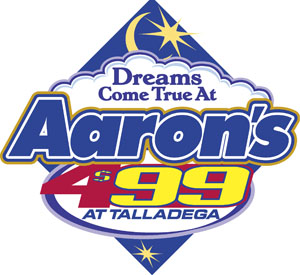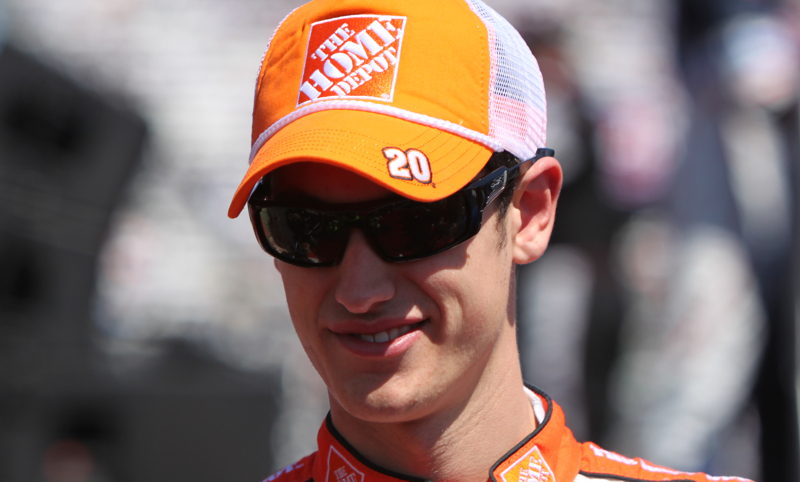The best thing about researching NASCAR history is the little nuggets you find along the way. Many
of these jewels never find their way into an article, but they are all worth remembering. Some of the names you’ll recognize and some may be unfamiliar. Not everyone can be a star, but that doesn’t mean they don’t have a story to tell.
If you think racing in NASCAR is more competitive today than it’s ever been, you might want to think again. Back in the day, some drivers would do anything for that little extra advantage.
“Mad” Marion MacDonald is a perfect example. He was born in Florida in 1918 and learned to drive in the family orange orchard.
“One day I hit the railroad tracks and my car jumped a four-foot gate on the other side. After that I never opened that gate again,” he said.
MacDonald began his flirtation with racing In 1938 when he went to work for Bill France at his gas station in Daytona Beach. He had his own unique way of doing things. No one can say for certain where he got his nickname, but there are plenty of tales to choose from.
At age 21 he entered the beach road course at Daytona driving his personal car. He tied himself into the car with a rope and had a knife taped to the dash so he could cut himself free if an emergency arose. During a pit stop, MacDonald grabbed a hamburger from one of his crew during a pit stop and continued to eat it as he raced around the track. Maybe he was simply hungry or maybe he just loved showing off for the fans.
Later in that same race, MacDonald came upon a stalled car. The driver had climbed out of the car and to avoid hitting him Mad Marion had to go high. The next thing you knew, he was up on the dunes on two wheels, as he drove past the stunned driver.
But the story doesn’t end there. MacDonald had figured out that taking the turn on two wheels improved his speed so he repeated the maneuver throughout the race, taking several of the turns on two wheels.
Most would agree that going fast is the best way to win races. It may surprise you to know that at least one driver took the opposite approach.
Herman “The Turtle” Beam drove in the Grand National series from 1957 to 1963. His claim to fame comes from holding the record for the longest streak of races without a DNF, with 84. Beam was a master at getting the most out of a dollar. He built his own cars, towed them himself and knew exactly what he had to do to make a little money.
Gene Glover, a fellow racer, said of Beam, “he knew the distance to each racetrack, how many gallons of gas it took to get there, what you had to do to qualify for the race, how much money the race paid for each position, and where he thought he could finish.”
“They called him ‘Herman the Turtle’ because he had good equipment, but he just didn’t want to drive fast, so he just got down on the apron and stayed out of the way. A lot of times, he’d end up with good finishes.”
This may sound a little crazy, but you have to remember that back in those days, it wasn’t unusual for half the field to fall out of a race with mechanical issues or due to crashes. Beam’s survival strategy often netted good results. In 194 races, he had 57 top ten finishes.
“Everybody respected Herman and his mechanical abilities,” Johnson City racer Paul Lewis said. “He was very intelligent and very articulate, and he always had good equipment.”
“He just didn’t like to drive fast.”
Many of today’s drivers have been groomed from an early age to appeal to the corporate sponsors that have allowed NASCAR to flourish. For the most part, we never get to see the men or women behind this polished image. But NASCAR history is littered with colorful characters. What you see is what you get. Their antics both on and off the track speak of a time when racing was fueled by testosterone and you never knew what was going to happen next.
Joe Weatherly had a short but significant career. He only ran two full seasons in NASCAR’s premier series and won Cup championships both seasons, in 1962 and 1963. He was known for his hard racing and famous for his practical jokes. “The Clown Prince of Racing,” Weatherly never missed an opportunity to have some fun.
In the days before cars had start switches, Weatherly would sneak along pit road and steal the keys to all the cars. When the command, “Gentlemen, start your engines,” was given, Joe’s car was the only one to fire up. In Darlington for a race, Weatherly came up with one of his most well-known pranks. He paid a farmer $100.00 for a mule. The next day, Weatherly proudly rode the mule, complete with race stickers, in the Darlington parade.
Then there’s the story of Jim Vandiver who put new meaning into the phrase “running from the law.”
Jim Vandiver began racing in NASCAR’s top division in 1968. His Cup career spanned 14 seasons with 24 top ten finishes. But he’s most famous for an incident that happened at the 1973 Darlington Southern 500. During the race, he spun and brought out a caution. He came to a stop in turn 3, jumped from his car, ran up the banking and disappeared from the track. It seems that two deputy sheriffs had been standing in Vandiver’s pit, waiting to arrest him after he finished the race.
Vandiver was in the middle of a child custody dispute and was supposed to be in court the same day as the race. He thought his lawyer had taken care of things, but the judge had charged him with contempt of court. He had been tipped off ahead of the race that the law would be waiting for him.
“When the field got slowed down I jumped out of my car,” Vandiver said, “ran across the track and jumped the wall. When I got to a chain linked fence it was like someone knew I was coming because right there the fence had been cut like somebody done snuck into the race so I went right through it to the road outside the track.”
I’d like to leave you with two more stories. NASCAR is all about statistics. New records are set and old records are broken. However, there are a couple of NASCAR finishes that were so unique that it is unlikely they will ever be repeated. Both happened in the 1950’s.
On September 30, 1956, at Asheville-Weaverville Speedway, there was a 200 lap race with 24 cars in the field. On lap 181, Curtis Turner took the lead. There were only 14 other cars left in the race. Suddenly a huge crash broke out behind Turner and he was the only one to get through it unscathed. He pulled into his pit and the race was called. To this day, it’s the only race that has ever ended with just one car running.
Raleigh Speedway was the site of another unusual finish. The 100 mile race took place on September 30, 1952 and two sets of brothers would accomplish something that had never been done. Fonty Flock finished first and Herb Thomas took second place. But it’s the third and fourth place finishes that will amaze you. Fonty’s brother Tim finished third and Herb’s brother Donald finished in fourth place.
From the astounding to the hysterical, NASCAR history is a treasure trove waiting to be explored. You never know what you’re going to discover but one thing is certain. You always leave with a smile on your face.
Thanks to legendsofnascar.com, Tom Higgins and laidbackracing.com, Patty Kay at insiderracingnews.com and David Scercy at bleacherreport.com








I just want to say that I always look forward to reading the stories that Angela Campbell writes! I always find them interesting and full of knowledge of things I didn’t know. This particular story had me wanting more to read! I love reading about racing, “back when!” Those sounded like the “good ole day’s”…they took their racing serious, but yet, there was a good bit of humor involved also! I want to say, thanks Angela for another great story and as always, I’ll be waiting on the next one! I simply loved this one, it took me back in time!
Thanks Susan, I’m glad you enjoyed reading the stories of some of NASCAR’s most colorful characters. I don’t think the drivers today would get away with some of these antics but it would certainly be fun to watch.